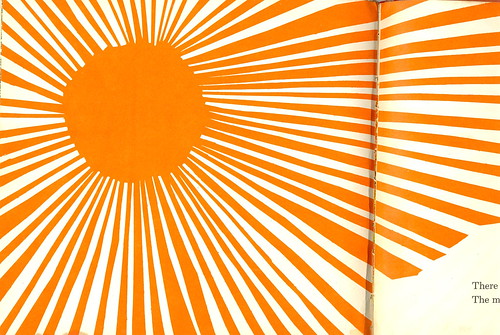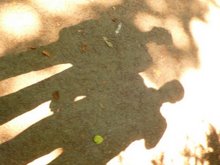
Astronomer Emeritus
Former Chairman of the American Museum-Hayden Planetarium
Let's Read and Find Out Science Books
The series was created in the 1960's by early-childhood education experts, Roma Gans (Roma Gans, Professor Emeritus of Childhood Education, Teachers College at Columbia University) and Franklyn Branley. Harper boasts that it is one of their longest running series. Each book in the series introduces "the reader through a basic science concept and then, step-by-step, takes the reader through that idea, providing a focused narrative study for the young child," according to HarperCollins the publisher of the series. The older books in the series was published by Crowell and by Harper & Row. On the back of the series the following statement can be found :
Children want to be up-t0-date. As a child reads or is read to, he feels himself stretch in importance. This is a feeling that each child should have in growing up. Let's Read and Find out Science Books are designed to help him acquire this feeling. They are planned for the child who is eager to know.
Let's-Read-And-Find-Out Science Books
The series was created in the 1960's by early-childhood education experts, Roma Gans (Roma Gans, Professor Emeritus of Childhood Education, Teachers College at Columbia University) and Franklyn Branley. Harper boasts that it is one of their longest running series. Each book in the series introduces "the reader through a basic science concept and then, step-by-step, takes the reader through that idea, providing a focused narrative study for the young child," according to HarperCollins the publisher of the series. The older books in the series was published by Crowell and by Harper & Row. On the back of the series the following statement can be found :
Children want to be up-t0-date. As a child reads or is read to, he feels himself stretch in importance. This is a feeling that each child should have in growing up. Let's Read and Find out Science Books are designed to help him acquire this feeling. They are planned for the child who is eager to know.
Let's-Read-And-Find-Out Science Books
1. present basic science information
2. are written with an understanding of how children think
3. are brief enough for the young child to cope with
4. are long enough to challenge him
In 1960, he originated the Let's-Read-and-Find-Out Science series. Dr. Branley was the author of over 150 science books for children. Franklyn M. Branley was born in New Rochelle, New York in 1915. He received degrees from New York University, the State University of New York at Paltz, and Columbia University.
In the mid-1930s, Branley began his elementary and secondary school teaching career, science education for children was a new venture. Only a few course materials existed to explain science to children, and many instructors did not teach it at all. Branley coauthored a teaching pamphlet for elementary science instruction and began his career writing for professional journals and children's magazines.
Branley regretted that many schools waited until junior years to teach science to children. He instead promoted the idea of exposing children as young as preschool age to the excitement of science, believing younger children are more capable of grasping scientific principles than people gave them credit for. Between 1947 and 1957 Branley coauthored nine "experiment series" books, designed to allow children to use common household objects to learn about topics as diverse as airplane instruction, microscopes, optical illusions, and electricity.
In 1956 Branley became an associate astronomer. Branley was trained as an astronomer and a teacher. He was hired in 1957 by the Hayden Planetarium of the American Museum of Natural History in New York City to design its educational programs. He became chairman of the planetarium in 1968 and retired four years later to write full time. The International Space Station: Stage 2 (HarperCollins, 2000), named one of Booklist's top 10 science books of the year for children.
In the 1960s, Branley founded and co-edited the "Lets-Read-and-Find-Out-About-Science" books, a highly successful series explaining scientific principles to early readers. Branley also received many literary awards, including the Edison Award for the Outstanding Children's Science Book of 1961, Experiments in Sky Watching.
In the mid-1930s, Branley began his elementary and secondary school teaching career, science education for children was a new venture. Only a few course materials existed to explain science to children, and many instructors did not teach it at all. Branley coauthored a teaching pamphlet for elementary science instruction and began his career writing for professional journals and children's magazines.
Branley regretted that many schools waited until junior years to teach science to children. He instead promoted the idea of exposing children as young as preschool age to the excitement of science, believing younger children are more capable of grasping scientific principles than people gave them credit for. Between 1947 and 1957 Branley coauthored nine "experiment series" books, designed to allow children to use common household objects to learn about topics as diverse as airplane instruction, microscopes, optical illusions, and electricity.
In 1956 Branley became an associate astronomer. Branley was trained as an astronomer and a teacher. He was hired in 1957 by the Hayden Planetarium of the American Museum of Natural History in New York City to design its educational programs. He became chairman of the planetarium in 1968 and retired four years later to write full time. The International Space Station: Stage 2 (HarperCollins, 2000), named one of Booklist's top 10 science books of the year for children.
In the 1960s, Branley founded and co-edited the "Lets-Read-and-Find-Out-About-Science" books, a highly successful series explaining scientific principles to early readers. Branley also received many literary awards, including the Edison Award for the Outstanding Children's Science Book of 1961, Experiments in Sky Watching.
Happy Reading!

1 comment:
Sources:
Something About the Author, v. 4, pp. 32-34
Major Authors and Illustrators for Children and Young Adults, v. 1, pp. 302-306
Children's Books and Their Creators, pp. 78-79
Post a Comment